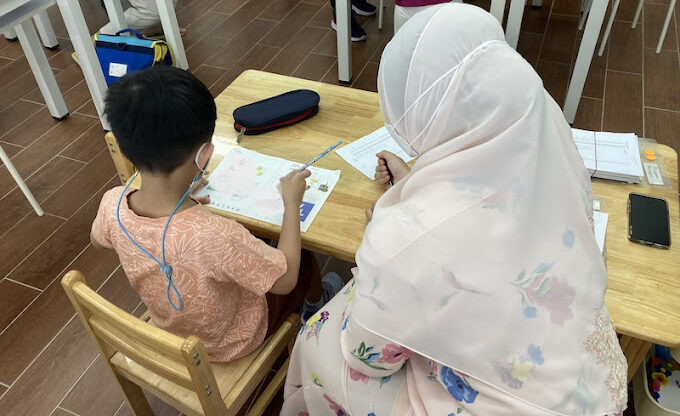Children learn best by discovering solutions on their own. Instead of giving answers, guiding them to think independently builds confidence and problem-solving skills. Here’s how you can support your children by guiding them to the answer while fostering independence.
Younger Children (Preschool & Early Primary Kumon Levels 6A–B)
Keep Sessions Short & Positive
Break worksheets into smaller parts and celebrate efforts. Maintain a calm, playful approach to mistakes like:
- Let’s try again and see if you can beat your last attempt!
Example: if a 5-year-old skips letters while reading (Kumon English – Level 7A), suggest tracking sounds with a finger to help them slow down.
Turn Mistakes into Learning Opportunities
Encourage self-correction with prompts like:
- What do you notice in this correct example?
- Try tracing it first.
For example: if a child writes the number ‘5‘ backward, have them trace it.
Older Children (Upper Primary & Secondary Kumon Levels C–J)
Ask Questions Instead of Giving Answers
Strengthen problem-solving skills by asking questions like:
- What do you think the question is asking?
- Have you encountered a similar example before?
- Can you check where your answer went wrong?
For example: if a child makes a mistake with fractions (Kumon Maths – Level E), you might ask, “Did you find a common denominator first?”
Encourage Self-Checking
Prompt your children to review their work before submission. If errors occur frequently, suggest they redo the question.
For instance, in algebra (Kumon Maths – Level G), prompt them to evaluate if their answer aligns with prior questions.


